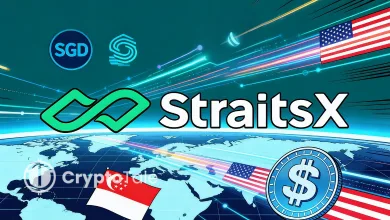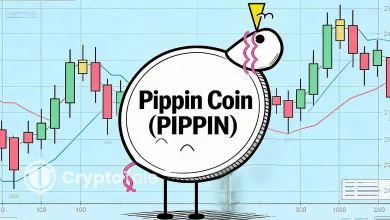Digital Asset Treasuries Face Pressure, ETH Stands Strong

- Standard Chartered says compressed mNAVs limit growth for smaller crypto treasuries.
- Larger firms like Strategy and BitMine could acquire weaker ones at discounted valuations.
- Ethereum treasuries gain an advantage over BTC and SOL due to staking yields and scale.
Publicly listed digital asset treasuries (DATs) faced pressure after Standard Chartered warned that falling market-to-net asset values (mNAVs) are threatening smaller firms. The bank’s research noted that companies like Strategy (MSTR) and BitMine (BMNR) could benefit from looming sector consolidation, while weaker players may struggle to sustain their accumulation strategies. The report by the bank pointed to mounting risks from compressed valuations, market saturation, and shifting investor sentiment.
mNAV Collapse Shuts Off Growth Pathways
mNAV, the ratio of enterprise value to crypto holdings, has emerged as the defining valuation metric for DATs. A reading above 1 allows companies to issue shares and keep accumulating tokens.
However, Standard Chartered noted that several treasuries have slipped below this level, effectively cutting off their ability to expand. The bank pointed out that firms, including Strategy, BitMine, Metaplanet (MTPLF), Sharplink Gaming (SBET), Upexi (UPXI), and DeFi Development Corp (DFDV), have all seen valuations compress in recent weeks.
Analysts attributed the decline to investor caution, unsustainable business models, and heavy issuance of new stock. Importantly, the fast growth of Ether and Solana treasuries has intensified the downward pressure on Bitcoin-focused firms.
Venture firm Breed issued a similar warning in June, arguing that only a few DATs would escape what it described as a “death spiral.” The note emphasized that sustained premiums depend on strong leadership, disciplined execution, and clear strategies that increase crypto-per-share despite volatile conditions.
Larger Treasuries Eye Consolidation Opportunities
Standard Chartered’s report stated that consolidation now appears increasingly likely, with larger treasuries positioned to acquire rivals trading below asset value. Strategy’s continued Bitcoin accumulation could become cheaper through such acquisitions than direct market purchases.
These potential moves, however, would rotate coins within the DAT ecosystem rather than create new demand for Bitcoin. Greg Cipolaro, global head of research at New York Digital Investment Group (NYDIG), said narrowing premiums across DATs showed investor concerns.
These include supply unlocks, changes in corporate direction, profit taking, and limited differentiation among strategies. He added that shrinking spreads between stock prices and underlying crypto holdings continue to weigh on valuations.
Josip Rupena, CEO of crypto lender Milo, compared DAT models to collateralized debt obligations from 2008. He noted that products based on sound assets like Bitcoin risk being engineered into structures where investors cannot easily gauge exposure.
Related: Standard Chartered Sees Ethereum Hitting $4K by 2025
Ethereum DATs Gain Advantage
While Bitcoin treasuries face mounting challenges, Standard Chartered’s global head of digital assets research, Geoffrey Kendrick, argued that Ethereum and Solana treasuries hold structural advantages.
Kendrick further added that both generate staking yields and support higher mNAVs than Bitcoin treasuries. Moreover, Ethereum appears better positioned, as ETH-focused firms are more established than Solana ones.
BitMine Immersion Technologies, the largest DAT, has continued expanding after securing shareholder approval for its strategy. The company already holds more than 2 million ETH, equal to about 5% of supply, yet remains only a third of the way to its target.
Kendrick noted that Ethereum treasuries collectively account for 3.1% of the circulating supply, compared with 4% for Bitcoin and 0.8% for Solana. Nasdaq’s reported requirement for listed firms to secure shareholder approval before allocating to digital assets has raised further uncertainty for Solana-focused DATs.
This potential hurdle, combined with a smaller treasury size, leaves Ethereum with a clearer growth path. Standard Chartered concluded that DAT activity is a more supportive driver for ETH than BTC or SOL.
On the whole, Standard Chartered’s warning shows the growing pressure on digital asset treasuries as mNAVs fall across the sector. While smaller firms face restricted growth, larger players like Strategy and BitMine could consolidate weaker rivals. Ethereum-focused treasuries remain more resilient, supported by staking yields and clearer structures, positioning them ahead of Bitcoin and Solana counterparts in the current market environment.




